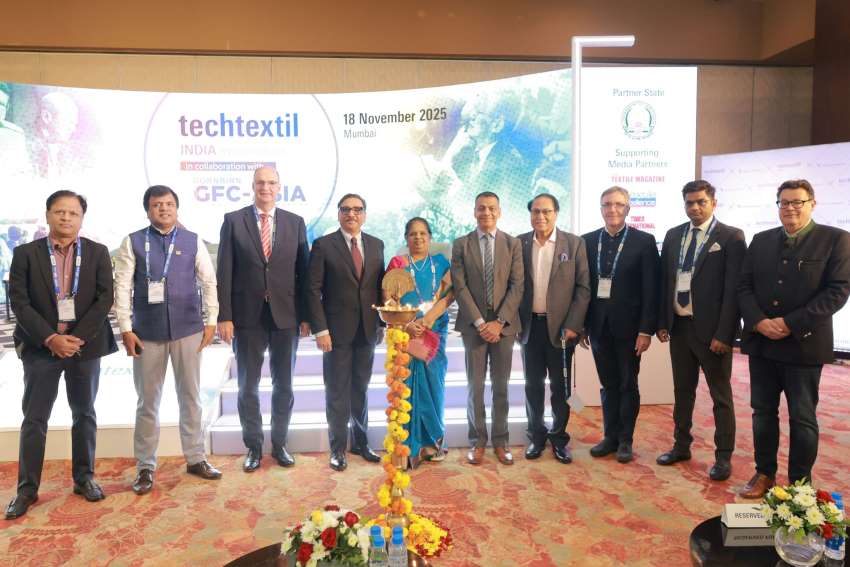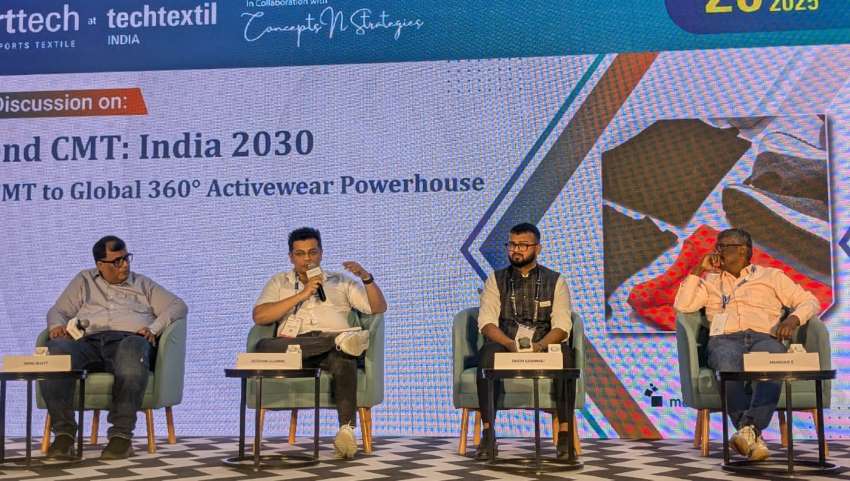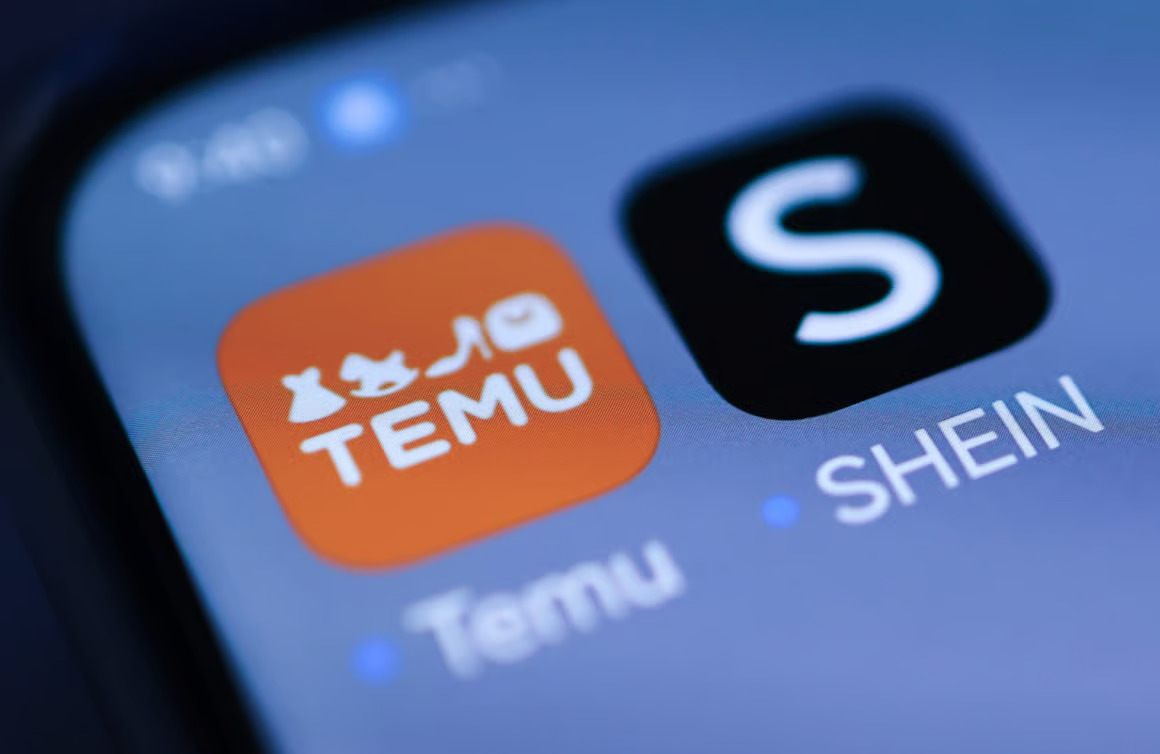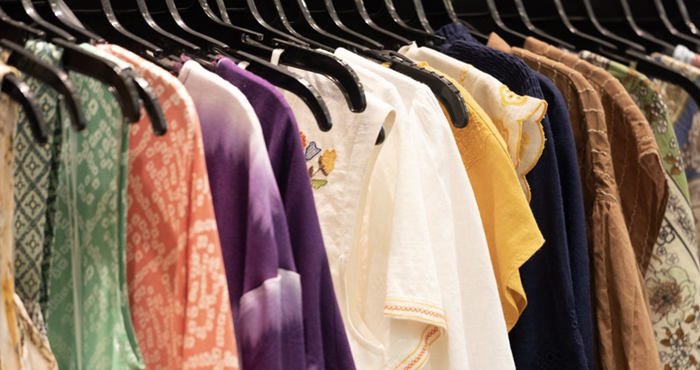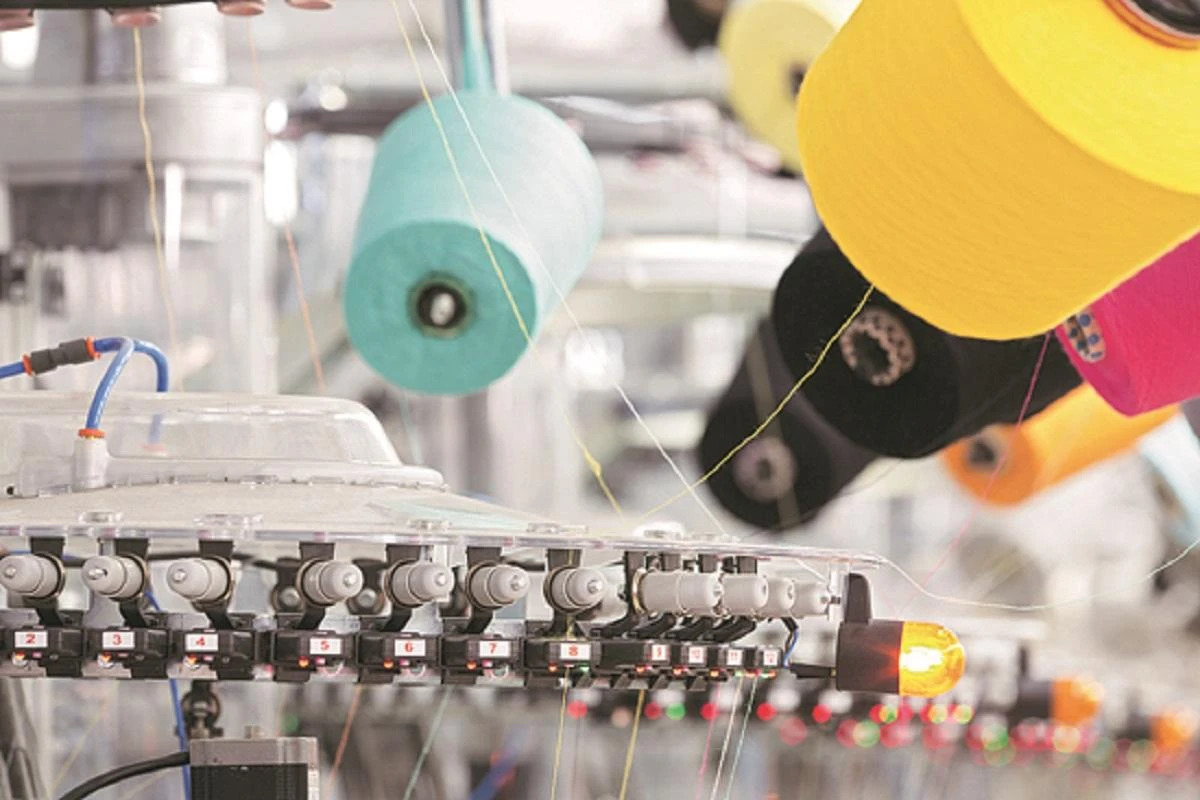FW
UK’s definitive showcase for Home, Gift, and Fashion, Spring Fair will return to the NEC Birmingham from February 1-4, 2026.
The 2026 edition promises a ‘new era’ with an expanded footprint, a re-energized visitor experience, and a bold new program of content and networking, cementing its status as the most influential trade event in British retail.
Visitors can expect immersive, sensory, and beautifully designed feature spaces alongside an immense lineup of over 1,200 exhibitors, with 38 per cent of the products being exclusive to the show. The event remains the largest global showcase for the gift, home, and fashion sectors, allowing buyers to explore over 1 million products across curated destinations.
The event will house exclusive zones for Gift, Home, Living & Décor, The Summer House Edit, Christmas, Festive & Floral, Greetings, Party & Celebration, Beauty & Wellbeing, Fashion, and Everyday.
The 2026 edition of the event will also launch Fashion at Spring Fair, a brand-new destination dedicated to style, creativity, and trend-driven sourcing. This new hub consolidates apparel, accessories, and jewelry under one roof, directly responding to buyer demand for a fashion-first showcase. It will featured exhibitors like Urban Bliss, Lighthouse Clothing, and Girl in Mind, alongside jewelry and accessories brands like Scream Pretty, Bill Skinner, and Ayala Bar.
The Fair continues to champion emerging talent through its New Business Pavilions, the #SBS Village (in partnership with Theo Paphitis), and the Gift of the Year Showcase. Thousands of leading brands are already confirmed, such as Coach House, My Gifts Trade, Hill Interiors, Joe Davies, and Ty UK, ensuring a comprehensive view of the products that will define the 2026 retail year.
Fashion brand Guess organized the 2025 edition of its global conference, ‘One World, One Brand’ in Marrakesh, Morocoo.
The brand’s 8th annual convention united 800 guests from over 100 countries for a three-day schedule packed with conferences, workshops, gala dinners, cocktail receptions, dazzling fashion showcases, and exclusive VIP experiences.
The conference culminated with a spectacular, exclusive fashion show beneath the desert stars at the iconic El Badi Palace, a stunning example of 16th-century Moroccan architecture. The show debuted the Guess Spring/Summer 2026 and Pre-Fall 2026 collections, showcased select iconic archive pieces, and unveiled a special Marciano by Guess capsule collection created just for Marrakesh.
More than just a corporate gathering, ‘One World, One Brand’ is an opportunity to bring together people from across the globe to share ideas, celebrate our creativity, and immerse ourselves in the unique lifestyle and values that define Guess, says Paul Marciano, Co-founder and CEO.
The conference was attended by Guess employees, global business partners, and a roster of high-profile international talent, including Italian influencer Chiara Ferragni, German model and entrepreneur Leonie Hanne, French creator Lea Elui, Irish media personality Maura Higgins, Indian actress Krystle D'Souza and Filipino actress Andrea Brillantes
Guess Inc. designs, markets, distributes, and licenses a lifestyle collection of contemporary apparel, denim, handbags, watches, eyewear, footwear, and other related consumer products. The brand’s products are distributed through branded stores, department stores, and specialty stores worldwide. As of August 2, 2025, Guess directly operated 1,062 retail stores across Europe, the Americas, and Asia, with partners and distributors operating an additional 527 retail stores worldwide, reaching approximately 100 countries globally.

In the quiet industrial corridors of Ethiopia’s Hawassa Industrial Park, rows of sewing machines with local workers assemble garments destined for global retail shelves, many of them carrying ‘Made in Ethiopia’ tags, but backed by Indian capital, expertise, and supply chains. This scene captures a profound shift underway in India’s apparel export story. Confronted by rising costs, tariff headwinds, and intensifying competition from regional rivals, a growing number of Indian textile and garment exporters are looking beyond traditional manufacturing hubs and planting roots in East Africa.
From KPR Mills and Raymond to Arvind and Gokaldas Exports, Indian firms are exploring or expanding their African footprint, drawn by lower labor costs, preferential trade agreements, and investor-friendly industrial ecosystems. The move signals a new phase in India’s textile evolution one that blends pragmatism with strategic foresight.
Shrinking margins and global trade shifts
For decades, India has been one of the world’s largest apparel exporters, supplying to retail giants like H&M, Zara, and Gap. Yet, in recent years, its competitive edge has dulled. The country’s labor costs have nearly doubled over the past decade, with average monthly wages in apparel clusters such as Tirupur and Bengaluru reaching $130-$150. In contrast, Ethiopian workers earn as little as $60 a month a gap that can decisively alter margins in a price-sensitive global market. “Cost efficiency is no longer a matter of operational discipline it’s a matter of survival,” says an apparel industry executive based in Coimbatore.
Table: India’s apparel exports (FY25).
|
Indicator |
Value/growth |
Source/Period |
|
Apparel exports |
$11.3 billion |
AEPC, Jan 2025 (Apr–Dec FY25) |
|
Year-over-Year (YoY) Growth |
+11.6% |
AEPC, Jan 2025 |
|
Share of Textiles & Apparel in Total Exports |
7% |
Ministry of Commerce, FY25 |
|
Top Export Markets |
US (27%), EU (23%), UAE (9%), UK (6%) |
AEPC, FY25 |
|
Target for 2030 ("40 by 30") |
$40 billion |
AEPC Vision Document |
|
Top Apparel Clusters |
Tirupur, Bengaluru, Noida, Ludhiana, Ahmedabad |
N/A |
Adding to the strain are tariff disadvantages. Bangladesh, India’s closest competitor, enjoys duty-free access to the European Union and the US through trade agreements like the EU’s GSP+ and the US GSP. Indian exporters, by contrast, face duties as high as 10-28 per cent, which erode competitiveness.
The situation worsened in 2025, when the US imposed a 50 per cent tariff on apparel imports from India, a move that sent shockwaves across the industry. Sivaramakrishnan Ganapathi, Managing Director of Gokaldas Exports was quoted saying in Bloomberg “If these duties stay, we have no choice but to look elsewhere.”
Domestic inefficiencies have compounded the challenge. Despite policy efforts, exporters cite slow incentive disbursement, inconsistent power supply, and labor attrition as major bottlenecks. “Factories often take two years to reach even 50 per cent utilization,” notes an AEPC member. “By that time, global demand cycles have already shifted.”
The pull, East Africa’s emerging edge
Against this backdrop, East Africa, especially Ethiopia and Kenya is emerging as an attractive alternative for Indian manufacturers seeking both cost relief and trade advantages.
Governments in the region are aggressively courting foreign investors, offering a combination of tax holidays, customs exemptions, and ready-to-use factory infrastructure. Industrial parks such as Hawassa (Ethiopia) and Athi River (Kenya) have become showcases for this model, promising lower setup costs and quicker turnaround times.
“The ‘plug-and-play’ approach cuts down capital expenditure by up to 40 per cent,” says a senior executive at KPR Mills, which established its African unit to supply European buyers. “The biggest draw, however, is duty-free access to major markets.” Under the African Growth and Opportunity Act (AGOA), apparel produced in eligible African countries enters the US market duty-free. Similar trade privileges exist with the European Union under the Everything But Arms (EBA) arrangement.
Table: East Africa vs. India: competitive analysis in the apparel sector
|
Factor |
East Africa (Ethiopia/Kenya) |
India (Comparative position) |
Competitive impact on India |
|
Monthly Labor Cost (Avg.) |
$55–65 |
$ 130-150 (Approx 150% higher) |
Massive Cost Disadvantage: East Africa offers a significantly lower wage base, making it a highly attractive, cost-leader destination for high-volume, low-margin garment assembly. |
|
Duty Access to US |
0% tariff (under AGOA) |
16-32% tariff (standard MFN rate) |
Immediate Price Gap: Creates a direct 16-32% final price advantage for East African products, severely limiting India's price competitiveness in the largest global market. |
|
Duty Access to EU |
0% tariff (under EBA/GSP) |
9-12% tariff |
Significant Tariff Barrier: Grants East Africa cost-free entry, undermining India's efforts to grow market share in the EU without a Free Trade Agreement (FTA). |
|
Corporate Income Tax Holiday |
Up to 10 years (Ethiopia) |
5 years (under the PLI Scheme) |
Superior FDI Incentive: The longer tax holiday offers a more stable, attractive long-term incentive for global brands and foreign investors (including Indian companies) to set up operations. |
|
Industrial Infrastructure |
Plug-and-play industrial parks (Hawassa, Bole Lemi) |
Fragmented clusters with some large, integrated units |
Faster Entry & Scalability: Integrated parks simplify logistics, utilities, and customs clearance, offering a quicker and less complex setup for buyers looking to diversify sourcing. |
|
Cotton Sourcing Potential |
3 million ha suitable; <10% under cultivation |
Cotton shortfall due to climate and acreage decline (High MMF focus) |
Future Vertical Integration: East Africa has the arable land to establish a fully integrated supply chain (from cotton to garment), which would counter India's existing backward integration strength and reduce their reliance on imported fabric. |
|
Response from Indian Exporters |
N/A |
Investing in and expanding manufacturing units in Kenya and Ethiopia. |
Co-opting the Advantage: Indian exporters are mitigating the tariff barrier by leveraging their capital and expertise to operate from East Africa, using it as a manufacturing platform for US/EU-bound orders. |
For Indian exporters, this effectively neutralizes their big disadvantage allowing them to compete head-on with Bangladesh and Vietnam on price and access. Africa also offers another crucial advantage: raw material availability. The continent produces about 10 per cent of global cotton, much of it underutilized. Coupled with a young and growing labor force, this gives manufacturers the potential to build vertically integrated operations, from spinning to stitching.
India’s footprint expands
A handful of Indian textile majors have already made decisive moves.
KPR Mills, for example, one of Tirupur’s largest exporters, set up a factory in Ethiopia to take advantage of AGOA benefits and reduce labor costs. The company’s leadership has called the move strategic and inevitable in a world driven by trade differentials. Similarly, Raymond Ltd, a household name in Indian textiles, invested nearly Rs 130 crore to establish a jacket manufacturing plant in Ethiopia, tapping into the country’s investor-friendly regime. And Arvind Ltd and Best Corporation have initiated operations or sourcing partnerships in East Africa.
Meanwhile, Gokaldas Exports, facing tariff shocks in its core US markets has explicitly announced its intention to expand production capacity in Africa. “To serve our customers competitively, we need to manufacture where trade access aligns with demand,” Ganapathi said.
This suggests a systematic recalibration rather than a short-term response a sign that Africa may soon become an integral part of India’s apparel export network.
Following China’s footsteps
India’s foray into East Africa isn’t unprecedented. It follows a trail long blazed by China, whose firms began investing in the region over a decade ago as part of Beijing’s ‘Go Global’ strategy. Chinese textile giants like Wuxi No. 1 Cotton Mill and Jiangsu Sunshine Group invested heavily in spinning and weaving operations, supported by large-scale government-backed industrial parks such as Hawassa and Bole Lemi.
The Chinese model is instructive: rather than focusing solely on low-cost labor, Beijing built integrated ecosystems complete with dedicated power lines, water systems, customs offices, and vocational training centers. “They didn’t just build factories; they built value chains,” notes a Delhi-based trade analyst. “India’s approach so far is more transactional to replicate China’s success, it must think long-term.”
That means not just producing garments in Africa, but developing local skills, investing in cotton farming, and creating logistics infrastructure that reduces dependency on imports.
Africa’s growing pains
Despite the optimism, operating in Africa comes with challenges. Productivity levels remain low, with factory efficiency often at 40-45%, according to industry reports. “The workforce is eager but inexperienced,” says an Indian production manager overseeing a unit in Kenya. “It takes months of training before we reach acceptable productivity levels.”
Infrastructure, too, is patchy. Transport bottlenecks and customs delays can stretch lead times to 120-150 days, undermining the agility needed for fast-fashion supply chains. Political instability, particularly in Ethiopia, has also disrupted operations at times. Still, Indian investors remain cautiously optimistic. “These are teething troubles,” says a senior textile executive. “The fundamentals cost, access, and demographics are in Africa’s favor.”
What this means for India’s apparel future
Rather than signaling a retreat, the shift to Africa reflects a diversification of India’s apparel industry. Analysts expect exporters to adopt a dual-sourcing model keeping high-value, design-led, and quick-turnaround production in India, while shifting bulk and price-sensitive orders to African bases.
This could, in fact, redefine India’s role in the global apparel value chain. The country may evolve from being a manufacturing center to a hub for design, innovation, and raw material supply, supporting its offshore factories across Africa and Southeast Asia. At a policy level, the trend underscores the urgency for India to secure Free Trade Agreements with key markets. Negotiations with the UK and the EU including the proposed Comprehensive Economic and Trade Agreement (CETA) are being closely watched.
As global apparel trade undergoes tectonic shifts, India’s exporters are proving both nimble and pragmatic. Moving into Africa is not just about chasing cheaper labor; it’s about future-proofing against policy risks, tariff volatility, and evolving consumer timelines. The tags may soon read ‘Made in Ethiopia’ or ‘Made in Kenya’ but behind many of them will be the design rooms, spinning mills, and entrepreneurial spirit of Indian textile firms quietly rethreading their global narrative from Tirupur to the tropics.
Puma has named Ronald Reijmers as its new Vice President- Global Retail. The 55-year-old is set to start his new role on November 1, 2025 where he will oversee the development of the company's full-price and outlet stores across the globe. He will report directly to Matthias Bäumer, Chief Commercial Officer, Puma.
Reijmers brings nearly 30 years of experience in the sports industry, having held senior retail strategy and management positions at Nike, Adidas, and, most recently, Gymshark.
In an effort to accelerate growth and sharpen its focus in a quickly changing market, the sporting goods brand has adjusted its organizational structure. It has split its direct-to-consumer (DTC) business into two distinct divisions: Global Retail and Global E-Commerce.
Having previously led both the divisions, Erik Janshen has decided to leave Puma to pursue new professional opportunities outside the company.
A highly experienced leader with a strong track record across the industry, Reijmers will bring a deep global expertise in retail strategy and operations and help Puma build momentum in it global retail channel, says Matthias Baumer, Chief Commercial Officer. The brand also plans to announce the leader of its Global E-Commerce division in the coming weeks.
In Q2, FY26, Puma’ sales declined by 2 per cent at constant currency rates, coming in at just over €1.94 billion. The company also reported a loss before interest and taxes (EBIT) of €13.2 million.
Given these results, led by Arthur Hoeld, CEO, the brand’s management team projects sales to decline by a low double-digit percentage at constant currency, along with an EBIT loss, for the FY25.
Criticizing global buyers and brands, leaders of the Bangladesh Garment Manufacturers and Exporters Association (BGMEA) alleged they fail to raise product prices despite significant wage hikes and expensive new initiatives to improve workplace safety and compliance.
At a press conference held in the association’s headquarters, Md Atiqul Islam, President, BGMEA noted, while global buyers push for higher wages, they refuse to increase prices and are even canceling orders from factories located in shared or rented buildings.
The press briefing was held to announce steps taken to commemorate the first anniversary of the tragic Rana Plaza building collapse, which killed at least 1,135 garment workers. The BGMEA highlighted ongoing industry developments, including the registration of 150 trade unions over the past year, compared to just 38 in the previous eight years.
Islam urgently requested global brands to create a dedicated fund for the Rana Plaza victims and their families, moving beyond verbal assurances. He also called for the speedy disbursement oft/he existing ILO $40 million trust fund.
Islam labeled the buyers' practice of pulling orders from factories in shared buildings as ‘inhuman,’ pointing out that approximately 40 per cent of factories are located in shared or rented buildings, employing about 1.5 million workers.
He pleaded with buyers to reconsider withdrawing orders, assuring them apparel makers are committed to preventing another tragedy. Out of 700 factories assessed under the Accord, the Alliance, and the government-led initiatives, only 13 factories across four buildings had production suspended due to structural faults, demonstrating that not all shared buildings are unsafe.
Along with other textile groups, BGMEA plans to organize a series of events on April 24, including a rally and prayer programs for the deceased workers.
Garment exports from Tamil Nadu have reportedly plunged by around 8 per cent, driven primarily by the imposition of steep tariffs by the United States on Indian goods, specifically targeting the textile and apparel sector.
The US imposed a massive 50 per cent tariff on Indian exports, which makes garments significantly more expensive for American buyers compared to competitors. This tariff was initially a smaller ‘reciprocal’ duty which was later increased as a ‘penalty’ duty.
The tariff places Indian exporters at a significant disadvantage, as competitors like Bangladesh, Vietnam, and Indonesia face much lower US tariffs. This 30-point gap makes Indian products less viable in the US market.
Tamil Nadu is a powerhouse for India's textile sector, contributing about 28 per cent of the country's total textile exports. Known as India's ‘knitwear capital,’ Tiruppur sends a large portion of its garments to the US.
Exporters in hubs like Tiruppur are reporting drastic reductions and cancellations of US orders, with some claiming up to 80 per cent of US business has stalled.
US buyers are demanding steep discounts from Indian suppliers to offset the tariff cost, forcing exporters to operate at a loss just to maintain relationships or get paid for existing stock.
Factories are cutting work hours, reducing production shifts, and laying off workers, particularly contract and migrant laborers. The state government has warned that up to 30 lakh (3 million) jobs across the textile belt are at immediate risk.
There are reports of significant inventory buildup and rising working capital requirements as orders are on hold.
The Tamil Nadu government estimated that the state could lose up to $3.93 billion in export value across all affected sectors, with the textile sector alone potentially losing $1.62 billion.
The crisis is especially impacting women, who make up a large portion of the workforce in garment hubs like Tiruppur.
In essence, the 8 per cent plunge reflects the initial, severe impact of the 50 per cent US tariff, which has made Tamil Nadu's garments uncompetitive and led to a cascade of canceled orders and production halts.
The Prada Group reported strong financial performance for the first nine months of 2025, with net revenue rising by 9 per cent at constant exchange rates to €4 billion. This marks the company's 19th consecutive quarter of uninterrupted growth.
The stellar results were primarily driven by the retail channel across all regions, which saw sales growing by 9 per cent to €3.6 billion. This performance was backed by strong like-for-like growth and robust full-price sales.
Despite a challenging comparative base, the group continued to expand in Q3 2025 with overall revenue rising by 8 per cent and retail sales growing 7.6 per cent.
The group’s brands showed distinct trends. Miu Miu maintained its impressive four-year run, with revenue soaring by 41 per cent over the nine-month period and by 29 per cent in Q3, FY25. Prada's revenue accelerated in Q3 compared to the previous quarter, even though its retail sales declined slightly by 1.6 per cent for the nine months and 0.8 per cent in the third quarter.
Patrizio Bertelli, Chairman and Executive Director, stated, these consistent results confirm the strength of the group’s brands and the soundness of their strategy even in a complex macroeconomic climate. Their continued focus on creativity, outstanding products, and craftsmanship is the foundation for the group’s lasting relevance and sustainable growth.
Andrea Guerra, Chief Executive Officer, affirmed, the performance testifies to the integrity of the group’s brands and the diligent, robust execution of its teams. Despite the still challenging environment, the group remains confident in its growth trajectory, prioritizing investment in customer-exciting products and experiences, he added.
The Prada Group saw broad-based growth globally during the nine-month period. The Asia-Pacific region delivered double-digit growth of 10 per cent, with signs of market improvement in mainland China during the third quarter. The Middle East showed a robust growth of 21 per cent while Europe performed positively with 6 per cent growth supported by both local consumer spending and tourism.
The Americas posted a solid growth of 15 per cent and saw accelerated growth sequentially in the third quarter. Japan's revenue rose by 3 per cent after a 2024 marked by exceptional inbound tourist flows, with the third quarter showing improvement.
International association representing the nonwovens and related industries, EDANA views the European Commission's recent shift on the EU Deforestation Regulation (EUDR) as a missed chance to establish a clear, effective framework for combating global deforestation.
The recent announcement unnecessarily complicates matters where simplification was necessary. Instead of providing certainty, it's introducing confusion among businesses, disrupting already intricate supply chains, and potentially undermining Europe's competitiveness, opines EDANA.
The association’s members are committed to supporting global anti-deforestation efforts. However, supported by an IT system that remains inadequate, the Regulation in its current state presents fundamental challenges. These include unresolved issues regarding polygon geolocation and excessive due diligence requirements.
EDANA emphasizes, the European Commission should stick to its original proposal to the European Parliament and postpone implementation by 12 months. This would allow enough time to ensure the system is functional and fair for all businesses.
Frequent changes in direction damage business confidence and create uncertainty across global markets. These latest developments have already caused confusion on both sides of the Atlantic, with some nations pushing for a faster timeline while others are calling for a delay, states EDANA.

A new report highlights the global carbon fibre and yarn market growing and how. The report by Thryve Research projects the market will be worth $4.7 billion by 2033. The market, was at $2.5 billion in 2024, and is set to grow at a Compound Annual Growth Rate (CAGR) of 7.5 per cent from 2026 to 2033. This increase is largely due to a global push for lightweight, high-strength materials across critical sectors like aerospace, automotive, and wind energy. While Asia-Pacific leads this growth, a new narrative is emerging: India's ambitious stride to become a key player in the production and application of this material of the future.
The global growth picture
The global carbon fibre yarn market, currently at approximately $2.3 billion in 2025, is a testament to the material's versatility. Its applications range from enhancing the structural integrity of aircraft and automobiles to fortifying wind turbine blades and sporting goods. The market is segmented by application, with each sector driven by unique factors:
Aerospace: The primary driver is the demand for fuel efficiency and reduced emissions, making the high strength-to-weight ratio of carbon fibre indispensable for structural components.
Automotive: The shift towards Electric Vehicles (EVs) is a major catalyst. Carbon fibre-reinforced plastics (CFRP) help extend EV range by reducing vehicle weight, and are increasingly used in premium cars for body panels and crash structures.
Wind energy: As wind turbine blades grow longer to capture more energy, they require materials that are both strong and light to withstand immense forces. Carbon fibre is the ideal solution, improving durability and reducing overall weight.
Sporting goods: The market thrives on consumer interest in high-performance gear. Carbon fibre's lightness and strength are prized in products like tennis rackets, bicycle frames, and golf shafts.
Construction: The use of carbon fibre in seismic reinforcement and retrofitting aging bridges and buildings is a growing application, driven by the need for durable and corrosion-resistant materials.
Table: Global carbon fibre market and growth drivers
Region Market size ($ bn) Growth drivers Asia-Pacific 1.1 Robust manufacturing, industrialization, cost competitiveness Europe 0.6 Strong aerospace & wind energy industries, stringent regulations North America 0.5 Aerospace, defense, and premium automotive segments Latin America 0.07 Rising infrastructure investment, niche sporting goods demand Middle East & Africa 0.03 Emerging construction and energy sectors
Source: Thryve Research, Verified Market Reports)
India's changing market from importer to producer
Historically, India has been a net importer of carbon fibre, relying on countries like the US, France, Japan, and Germany for its supply. However, the tides are turning. In a significant policy shift, the Indian government has announced plans to achieve indigenous production of niche carbon fibre by 2025-26. This initiative is a cornerstone of the broader Make in India campaigns.
The Indian Carbon Fiber Market is projected to reach approximately $908.5 million by 2030, with a CAGR of 8.3 per cent from 2024 to 2030, as per IndustryARC. Growth is heavily influenced by domestic demand and the government's push for local manufacturing.
Factors driving growth
Wind energy sector: India's ambitious target of achieving 140 GW of wind capacity by 2030 is a primary driver. The country's growing wind energy sector requires large quantities of carbon fibre for the production of lightweight and durable turbine blades.
Technical textiles & defence: Carbon fibre is a critical material in the technical textiles sector, with applications in aerospace, civil engineering, and defense. The National Technical Textiles Mission is supporting research and development in this area, including projects for indigenizing carbon fibre production.
Automotive sector: India's Automotive Mission Plan (AMP) 2047 aims for significant growth in auto and auto component exports. The increasing adoption of lightweight materials to meet fuel efficiency norms and support the burgeoning EV market will fuel demand for carbon fibre.
Table: India’s carbon fibre industry Outlook (2025-30)
Metric Value Source Market Size (2030) $908.5 million IndustryARC CAGR (2024–2030) 8.30% IndustryARC Major Domestic Producers Reliance Industries, Jindal Advanced Materials, Silcarb Recrystallized Multiple sources Government Missions National Technical Textiles Mission, Automotive Mission Plan 2047 MoT / MoHI Major Demand Sectors Wind Energy, EVs, Aerospace, Defence, Technical Textiles (Not specified)
However, the move towards self-reliance is not just a government mandate but a tangible reality, with several companies leading the charge. For example, Reliance Industries Ltd (RIL) has announced plans to establish India's first world-class carbon fibre manufacturing facility in Hazira, Gujarat. This move is poised to transform the domestic landscape and make carbon fibre more accessible to Indian industries.
Jindal Advanced Materials (JAM) in a strategic partnership with Italy's MAE S.p.A., is setting up a carbon fibre plant with an annual capacity of 3,500 metric tonnes. This collaboration is a significant step towards local production and will position JAM as a key supplier in the industry. Similarly, Silcarb Recrystallized is a pioneer in manufacturing the equipment necessary for carbon fibre production, having successfully installed the country's first-ever carbon fibre production line. This is a crucial development in building the foundational technology for indigenous manufacturing.
What lies ahead…
Despite the promising outlook, the carbon fibre market in India faces challenges. High production costs, a reliance on imported precursor materials, and the need for a robust supply chain are key hurdles. Furthermore, concerns about the environmental impact of the manufacturing process and the difficulty of recycling carbon fibre composites need to be addressed.
However, the opportunities far outweigh the challenges. The government's Production-Linked Incentive (PLI) scheme and initiatives under the National Technical Textiles Mission are creating a supportive ecosystem for manufacturing. The growth of startups in sectors like drones and advanced manufacturing is also creating a new wave of domestic demand.
By focusing on R&D, fostering public-private partnerships, and addressing sustainability concerns, India is well-positioned to not only meet its domestic demand but also to carve out a significant share in the global carbon fibre and yarn market. The vision is clear: to weave a future where this high-performance material is no longer an import, but a symbol of India's self-reliance and technological prowess.

This year, the ITMF Annual Conference & Annual Convention will be held from October 24-25, 2025 at Yogyakarta.
Co-hosted by the International Textile Manufacturers Federation (ITMF) and the International Apparel Federation (IAF), this edition will be the 40th IAF World Fashion Convention and will bring together chief executives, industry experts, decision-makers, and innovators from across the entire global value chain. The Indonesian Textile Industry Association (API) will serve as the host association.
A crucial forum
Under the comprehensive theme, ‘Navigating Uncertainty & Adopting Technology – Pathways to Sustainable Strength in the Textile & Apparel Industry,’ the two-day conference will serve as a crucial forum for addressing the industry's most pressing challenges and opportunities.
Leaders from both the textile manufacturing (ITMF) and apparel/fashion (IAF) sectors will emphasize the need for industry-wide collaboration to build stronger, smarter, and more sustainable supply chains in a period of unprecedented global change. The joint convention aims to foster a deeper understanding across the value chain, which is essential for competitiveness.
Cutting-edge insights
The program is set to deliver cutting-edge insights through a series of dynamic sessions, including showcase of the potential and dynamics of one of ASEAN's largest economies and a major global production hub, discussions on compliance, global trade uncertainties, and evolving legislative landscapes, a deep dive into transformative technologies, including sessions on reducing audit fatigue and the latest progress in the sector, exploring the role and applications of Artificial Intelligence across the manufacturing, supply chain, and design processes, addressing the industry's critical path toward achieving net-zero emissions, including new initiatives like the manufacturer-led Apparel & Textile Transformation Initiative (ATTI) and a focused discussion on global trends in both cotton and man-made fibers.
The event will feature the presentation of the ITMF Start-up Awards, the ITMF International Collaboration Awards, and the ITMF Sustainability & Innovation Awards, recognizing pioneering global efforts.



